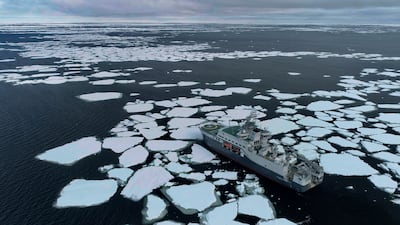People in the counties of Fermanagh and Tyrone in Northern Ireland may not yet know what they are getting themselves into. Protest signs have gone up against the announcement from mining company Karelian Diamond Resources of “world-class” deposits of nickel, copper and other so-called platinum group elements (PGE) in the area’s hills. A factor lurking could lift this issue beyond the passions triggered by permits and planning disputes. Should Washington pick up on the Karelian report it may want a slice of the action itself.
Critical minerals are one of the stated reasons the US administration, led by President Donald Trump, has designs on Greenland, on the other side of the North Atlantic. A 2023 survey by Greenland’s Mineral Resources Authority says the country boasts 23 of 34 categories of industrial minerals, including graphite, copper and nickel.
The resources of Ukraine and an ever-changing treaty demand from the White House bedevil the peace process in that country, which hosts Europe’s worst conflict since the Second World War. On Sunday, Mr Trump warned both Greenland and Ukraine that they needed to co-operate with US demands.
The Ukraine situation is obviously fraught and playing out in real time. The ambitions Mr Trump appears to hold for Greenland are serious, too. A historic shift has taken place in the island’s global importance.
Ever since Margaret Thatcher became one of the first world leaders, in the late 1980s, to take climate change onboard, I have thought the strategic position of Greenland would one day top the global agenda. Thanks to the Mercator Projection, on a map it looks big but, actually, as a landmass it is not the size of Africa as most globes appear to make it. The territory's northern latitude grants military bases there electro-magnetic advantages. Then there is its location. Greenland controls the shortest flight path between Europe and the US, and the Greenland–Iceland–United Kingdom (GIUK) Gap is the gateway through the North Atlantic. The island is an unsinkable carrier in a very important position in the ocean surrounding it, and this is at the root of its current troubles. It is the seas around Greenland as the polar ice melts that matter to Washington strategists.
Meanwhile, the US Navy is also building its positions around Norway’s high Atlantic possessions. The perennial tussle over the Svalbard Treaty, which in 1920 awarded the archipelago to Norway but allows citizens of signatory countries to move there, is heating up. Russia’s northern fleet is about to renew its submarines to surface vessels, leading to a Norwegian overhaul. The Norwegians have also bought almost 50 F-35A aircraft, stationed at high Arctic bases, including the Evenes air station.
Yet Europe’s historical lack of naval capacity to police the GIUK gap is one of the reasons that the US feels justified to act. Pointing to a vacuum left by Denmark, which holds the sovereignty of Greenland, the US is, in effect, telling Europe to get of the way. US Vice President JD Vance has remarked that Washington has no option but to assume Greenland — like it uses the Pacific’s Guam and Puerto Rico as strategic outposts.
The result is, as King Frederik X of Denmark recently posted on social media, an “altered reality”. It is increasingly clear the US sees a world of big blocs. Its dominance in the Western Hemisphere is shifting to direct, strategic control. In this vision, there is a Chinese bloc and Russian bloc and the imminent meeting place of these is the high Arctic.
Why, then, is the US acting in support of international freedom of navigation in the Red Sea – the pretext for its recent bombing campaign against the Houthi rebel group in Yemen? The Suez and Panama canals along with the Strait of Malacca are the three global pinch points the US continues to view as essential – preventing American access to them is a red line. At least, that is my inference from the Yemen campaign, which I wrote about as being imminent in February.
Elsewhere, Washington wants something in return for its security umbrella. Greenland is wary about what this will mean, especially as Mr Trump did not rule out military force over the weekend.
Ukraine has cited many objections to the minerals deal on offer to it. The US proposal is essentially for Washington to control all of the economic activity around Ukraine’s resource economy, with American control over three of five seats on an investment board overseeing the proceeds from the Ukrainian natural resource sector.
Some worry this is a colonial project, while others see it as a smokescreen for Ukraine’s capitulation, enforced by Washington, to Russia. Either way, it is another example of Europe being cut of the deal. In the world of blocs, there is a carve up.
So, any big mineral discovery in a disputed territory is now setting nerves on edge. Could that also be true of a part of the Irish island ruled by the UK?
It is worth noting that history already gives the US a role in the Northern Ireland peace process. Ancestors are very important to Mr Vance, who made his name with a book about challenging the ethos and values of his own people. His most notable ancestor, John Vance, left for America from the aforementioned County Tyrone.
The report on mineral riches in the area may still not stand up and Northern Ireland is a long way now from joining the Trump-inspired carve up. But in the longer run, that could change as this is truly a new world.


